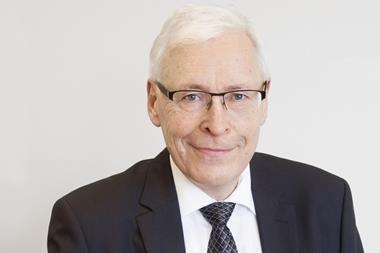DENMARK - The Danish government has confirmed it is considering changes the discount yield curve as a way of reducing the impact of historically low bond yields on pension funds.
The Ministry of Economics and Growth said talks were continuing with pensions industry association Forsikring & Pension (F&P) on managing the difficulties brought on by recent falls in bond yields for schemes with guaranteed pension products.
The ministry said: “In this context […] a change in the so-called discount yield curve is being considered, so that it corresponds more to the yield curve which will be implemented in all EU countries, when the Solvency II directive takes effect.
“A new discount yield curve like this will, if the occasion arises, raise the discount yields for long maturities,” it added.
But the ministry stressed that no decisions had been made at this point.
Talks to amend yield curve were confirmed yesterday, after yields on 10-year Danish government bonds fell as low as 1% at the end of May, as global market jitters swelled investor demand for “safe-haven” securities.
Low bond yields make it harder for pension funds to cover the pension yield guarantees and have a more immediate impact on their assessed solvency levels.
Torben Jensen, chief executive of consultancy Aon Hewitt in Denmark, predicted that while the curve had previously been extended to a seven-year period, now the authorities would actually alter the interest rate.
“I think they will make it [the discount yield curve] more flexible than before,” he said.
Low bond yields would also force pension providers to go further in their efforts to move customers to unit-link pensions and away from traditional with-profits products with a guaranteed element, Jensen added.
He forecast that the guaranteed interest rates of 1.5% being offered to new customers as part of traditional pensions would drop to zero.
But the market situation could yet normalize for pension funds, he pointed out.
“It depends on the interest rates and how long they continue at this low level. If it’s only for a year, then things will even out, but if it continues over the next five years it will be a serious problem,” he said.
In December the financial regulator, Finanstilsynet, acted to ease the pressure on pensions funds arising from the yield differential between Danish and German government bonds. It introduced a new alternative discount yield curve based on a 12-month moving average.
Meanwhile, major pension providers have said solvency levels remain high despite the crisis and they are still in the “green light” zone of the regulator’s traffic light solvency stress test system.
The statements follow yesterday’s move by the Finanstilsynet to conduct an immediate solvency stress test on all Danish pensions funds.
Danica Pension, the Danske Bank subsidiary, said its capital strength was 2.5 times larger than the solvency requirement.
Managing Director Per Klitgård said: “We are in the so-called green light for the Finanstilsynet and we always have been.”
AP Pension’s managing director Søren Dal Thomsen said the commercial pension group was prepared for a scenario of further falls in bond yields and simultaneous falls in share price falls.
“The big drop in yields doesn’t change the fact that AP Pension is in the green light,” he said.
The pension scheme for economists and lawyers, JØP, Lægernes Pension, the doctors’ pension scheme, and the teachers’ scheme, Lærernes Pension, all confirmed that they were also in the green light according to the regulator’s stress test.
As a pension fund offering unit-link pensions rather than with-profits or guaranteed products, PensionDanmark said it was less affected by the fall in bond yields than some other pension providers. But it, too, was in the green light according to the latest figures, it said.
“However there is no doubt that the record low level of interest rates will be a big challenge for the pensions sector looking ahead,” said managing director Torben Möger Pedersen.
Because of this, the fund would continue increasing its investments in property and infrastructure and other asset classes, where returns were expected to be significantly more than bond yields, but with a much lower risk than shares, for example, he said.














No comments yet